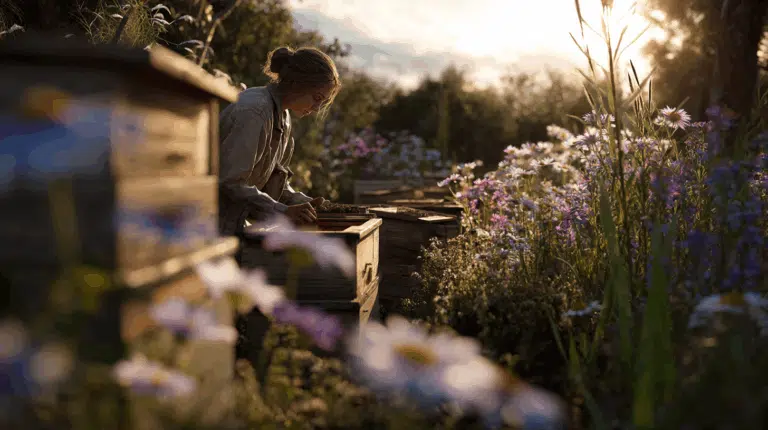Lisianthus is een elegante, langdurig bloeiende snijbloem met rozetvormige bloemen in diverse kleuren. Perfect voor boeketten en voegt zachte, romantische charme toe in de vaas.
Met Lisianthus zaden van EasySeeds.eu breng je elegantie en kleur in je tuin en boeketten. Lisianthus uit zaad zaaien als snijbloem is ideaal voor tuiniers die willen genieten van luxe bloemen met een zachte, delicate uitstraling. Lisianthus, ook bekend als Eustoma, staat bekend om zijn trompetvormige bloemen in diverse tinten, zoals wit, roze, paars, lavendel en blauw. De bloemen hebben stevige stelen en een lange houdbaarheid, waardoor ze perfect geschikt zijn voor boeketten, bloemstukken en decoratieve arrangementen.
Elegante bloemen en diverse kleuren
Lisianthus produceert sierlijke bloemen met dubbele of enkele bloembladen in pastel- en felle tinten. De bloemen zijn zacht van structuur en geven een luxe uitstraling aan boeketten en borders.
Langdurige bloei en houdbaarheid
Lisianthus bloeit van midden zomer tot de vroege herfst en behoudt zijn schoonheid lang na het snijden. Dit maakt de bloemen ideaal voor verse boeketten en bloemstukken.
Onderhoudsvriendelijk en veelzijdig
Lisianthus is eenvoudig te kweken, geschikt voor borders, perken, potten en bakken. Zowel beginnende als ervaren tuiniers kunnen genieten van deze sierlijke snijbloemen.
Bijvriendelijk en ecologisch
De bloemen trekken bijen en vlinders aan, wat bijdraagt aan biodiversiteit en een gezonde tuinomgeving.
Snijbloemen voor boeketten – De stevige stelen en luxe bloemen maken Lisianthus perfect voor verse boeketten en bloemstukken binnenshuis.
Borders & perken – Voeg elegantie, structuur en kleur toe aan je borders met deze bijzondere snijbloem.
Potten en bakken – Compactere Lisianthus-soorten zijn uitstekend geschikt voor potten, balkonbakken en terrassen.
Combinaties met andere snijbloemen – Mix Lisianthus met Zinnia, Celosia of Dianthus voor een kleurrijk en verfijnd effect in boeket en border.
Zaaitijd – Zaai binnenshuis van januari tot maart voor een vroege bloei; buiten zaaien kan na de laatste vorst.
Grond & standplaats – Gebruik goed doorlatende, voedzame zaaigrond en kies een zonnige tot halfschaduwrijke locatie.
Verzorging – Houd de grond vochtig tijdens kiemen en eerste groeifase; geef regelmatig voeding voor sterke, gezonde planten.
Uitharden – Laat jonge planten geleidelijk wennen aan buitenomstandigheden voordat ze definitief worden uitgeplant.
Onderhoud – Verwijder verwelkte bloemen (deadheading) om de bloei te verlengen en gezonde stelen te behouden.
Bij EasySeeds.eu vind je een uitgebreid assortiment Lisianthus (Eustoma) zaden, geselecteerd op kiemkracht, kleurvariatie en bloei-intensiteit. Of je nu borders wilt vullen, potten wilt verfraaien of zelf luxe boeketten wilt samenstellen – onze Lisianthus zaden brengen je tuin en boeketten elk seizoen tot leven.
🌸 Ontdek nu ons assortiment en bestel eenvoudig online – Lisianthus zaden kopen doe je bij EasySeeds.eu!

Lisianthus, ook bekend als Eustoma, is een elegante snijbloem met zachte, roosachtige bloemen en lange, stevige stelen.
Eustoma is de botanische naam en betekent letterlijk “mooie mond” in het Grieks, verwijzend naar de sierlijke bloemblaadjes.
Ja, Lisianthus kan uit zaad gekweekt worden, maar het is een langzame en gevoeligere plant die zorg en geduld vereist.
Zaai de zaden oppervlakkig op vochtige, goed doorlatende zaaigrond. Licht aandrukken, niet bedekken, want ze hebben licht nodig om te ontkiemen.
De zaden kiemen gemiddeld na 10–20 dagen bij een temperatuur van 20–22°C.
Lisianthus (Eustoma grandiflorum) wordt meestal in kassen geteeld, maar het kan onder bepaalde omstandigheden ook buiten worden gekweekt. Geeft bescherming tegen kou, wind en regen en een betere controle over temperatuur, vocht en licht voor optimale bloei. Tevens mogelijkheid voor vroege of continue productie.
De reden is dat Lisianthus gevoelig is voor lage temperaturen en slecht weer, waardoor buitenteelt vaak risico’s op vertraging of schade geeft.
Marktaantrekkingskracht: Lisianthus wordt geliefd om zijn roosachtige schoonheid en elegante bloemblaadjes, waardoor het een favoriet is onder bloemisten. De lange vaashoudbaarheid en het brede kleurenpalet maken de plant veelzijdig voor verschillende bloemontwerpen, van formele boeketten tot informele arrangementen.
Teelt: Hoewel Lisianthus uitdagender kan zijn om te kweken dan andere bloemen, zijn de prachtige bloemen de moeite waard. Met de juiste verzorging — zoals goed doorlatende grond, regelmatige watergift en voldoende zonlicht — kan de plant goed gedijen en overvloedige bloemen produceren.
Snijd wanneer de bloemknoppen net beginnen te openen; dit geeft de mooiste bloei in de vaas.
Snijd de stelen schuin af, verwijder bladeren onder waterniveau, zet ze in schoon water en voeg bloemvoeding toe.